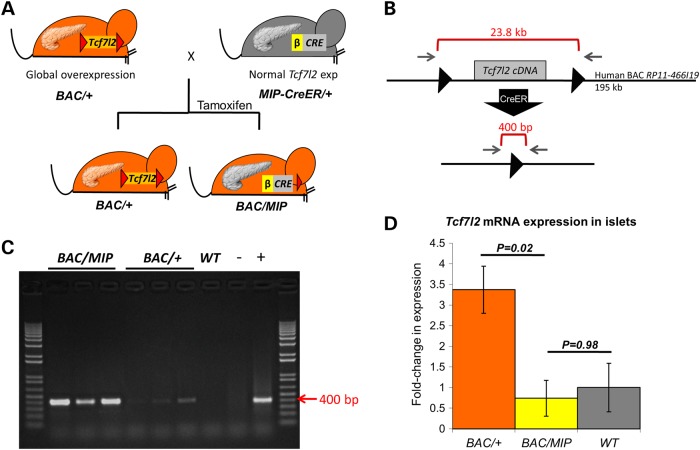Figure 1.
Beta cell-specific ablation of Tcf7l2 cDNA and restoration of Tcf7l2 expression. (A) Breeding scheme to create BAC/MIP mice. Hemizygous BAC/+ mice (orange) are shown carrying the Tcf7l2 cDNA in the BAC bordered by loxP sites (red triangles) and a pancreas with overexpression of Tcf7l2 (orange). Hemizygous MIP-Cre/+ mice (gray) are shown carrying the beta cell-specific MIP-Cre (gray) a pancreas with normal expression of Tcf7l2 (gray). Crossing these mice creates F1 offspring inheriting the BAC with no Cre (BAC/+) with continued overexpression of Tcf7l2, globally and including the pancreas (orange). This cross also produces mice that inherit both the BAC and the MIP-Cre, which upon activation by tamoxifen, cleaves at loxP sites to restore normal expression of Tcf7l2 in beta cells only (gray pancreas) while maintaining overexpression elsewhere (orange remainder of mouse). (B) Diagram of human BAC containing mouse Tcf7l2 cDNA floxed by loxP sites (black triangles). Gray arrows indicate PCR primers which can only amplify the 400 bp fragment after excision by Cre. (C) PCR amplification of 400 bp fragment in islets after excision by MIP-Cre. (D) Expression of Tcf7l2 in BAC/+, BAC/MIP and wild-type islets quantified by qRT-PCR.

